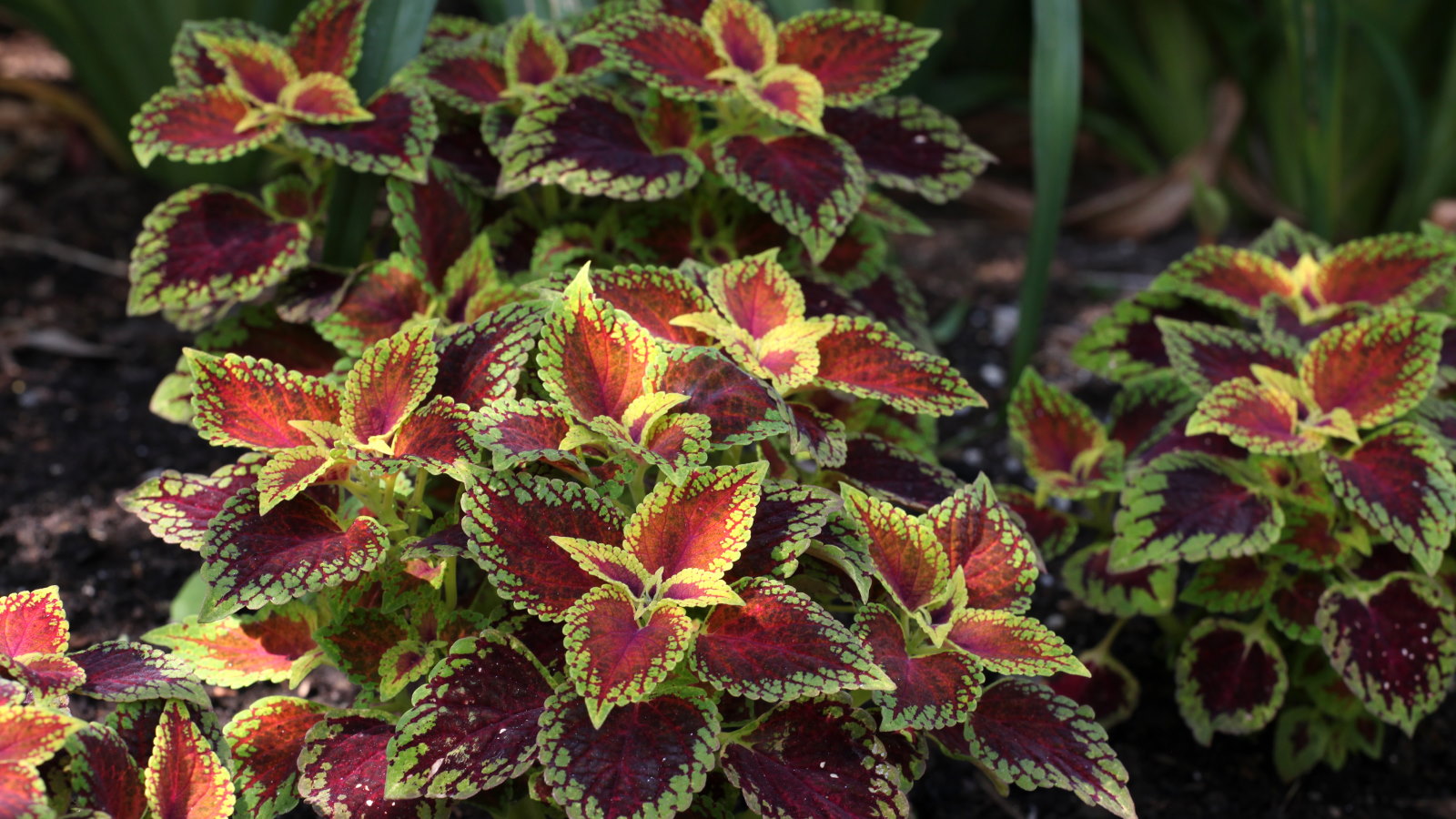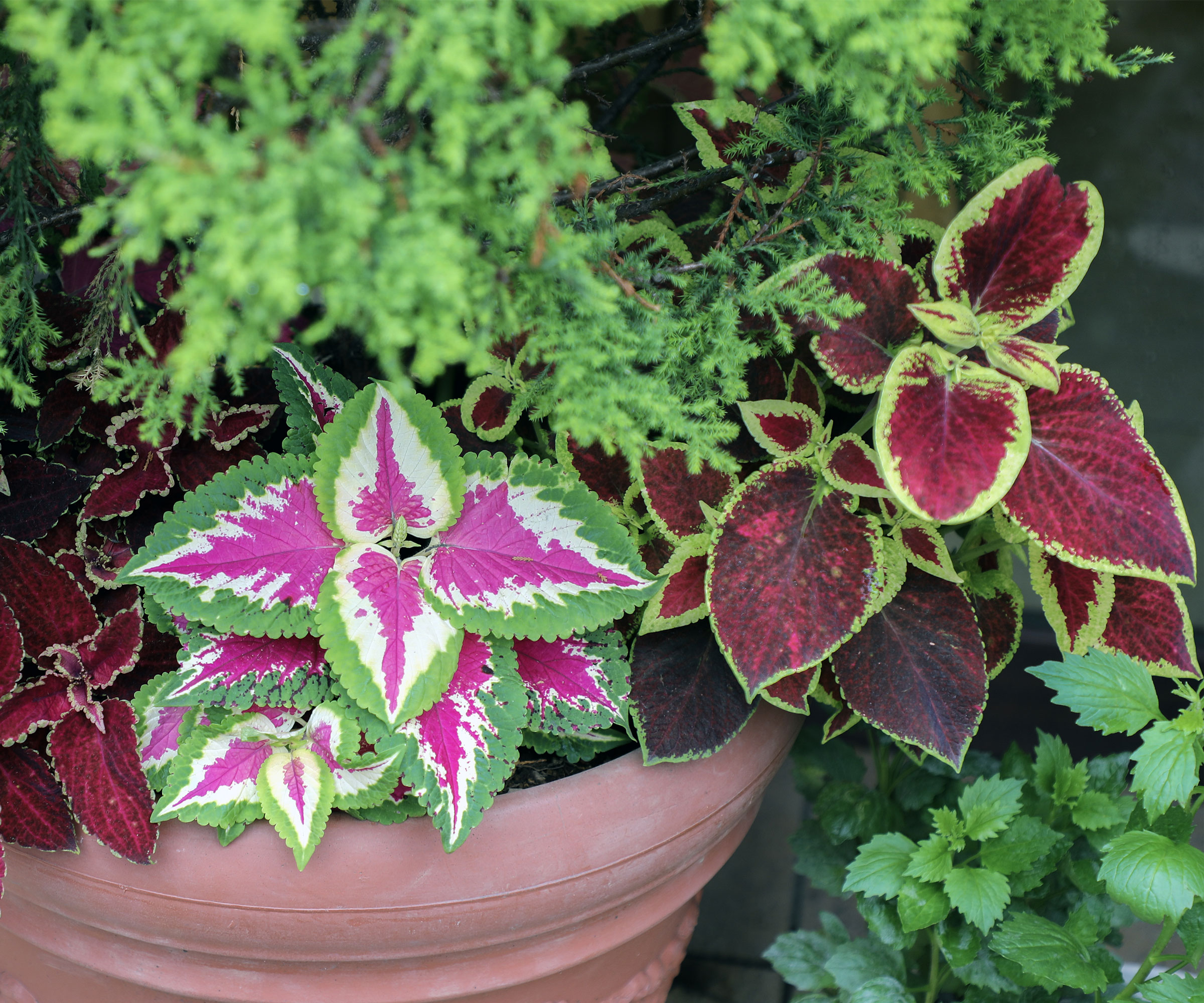
Coleus are popular plants to bring stunning pops of color to any space during summer. Loved for bright foliage in a rainbow of shades, the leaves can be multi-colored and have distinct patterns or serrated edges. The easy-to-grow and versatile plants bring a tropical feeling to any outdoor or indoor space.
Often grown as annuals, coleus can be perennials in warmer climates. Coleus will benefit from being cut back if they stay outdoors for winter, while there are also great reasons to cut back coleus if you want to overwinter plants indoors.
When you move plants indoors and trim them for winter, you can also propagate coleus for next year by taking cuttings. These cuttings can be overwintered and you will have new plants for next spring.

Should I cut back my coleus for winter?
Coleus are great for tropical garden ideas and can even be used as shade plants to brighten up darker corners of a backyard. We look closely at when and how to cut back coleus for winter, whether you plan to overwinter coleus indoors or outdoors.
Cutting back coleus for winter - is it necessary?

Coleus are tropical plants and can only grow year-round in US hardiness zones 10 and 11. The plants start to suffer at temperatures less than 50F and are killed by frost. This means coleus are commonly grown as annual plants in climates where temperatures drop below 32F during the winter.
Due to the plant’s love of heat, and dislike of cold, your climate will impact whether you should cut back coleus ahead of winter. There may be no need if you live in colder zones, however, it may depend on if you want to overwinter plants indoors to keep them warm and protected over winter.
‘If you're in a region with frost, it's generally not recommended to cut back coleus for winter,’ says Kiersten Rankel, a plant expert from the Greg app. ‘Instead, you can let your coleus die back naturally with the first frost, or bring them indoors to stay warm over winter.
‘If you're in a frost-free area where coleus can grow as a perennial, or if you're overwintering them indoors, pruning can be beneficial.’
Coleus in pots as part of container gardening ideas can be moved indoors, while plants in flower beds or borders need digging up and putting in a pot for winter. Another popular way of overwintering coleus is to take plant cuttings before the first frosts to grow indoors and plant outside after all danger of frost has passed in spring.
How to cut back coleus for winter

Cutting back coleus for winter has several benefits and can be done quickly and easily. It can help the plant preserve energy over the winter and set it in good stead for when it starts growing again next spring.
Kiersten Rankel claims that cutting back coleus for winter ‘helps maintain a compact shape’ and ‘encourages bushier growth’ for the next growing season. She recommends: ‘Trim back stems by about one-third to one-half of their height, making sure to leave several sets of leaves on each stem.’
If you cut back coleus before moving the plant indoors for winter, it ensures the new houseplant is a more reasonable size and not too large for any indoor space.
Coleus plants can grow anywhere from six inches to three feet tall and wide, depending on the variety. Therefore, keeping them to a more manageable size will be beneficial if overwintering them indoors as a tropical houseplant. A good trim will keep the coleus looking neat and compact.
The first step for cutting back coleus is to remove dead or diseased branches and yellowing leaves. Then assess the plant’s shape and decide on the size and form to which you intend to cut the coleus back.
Trim each stem individually by around one-third to one-half, using a pair of clean and sharp pruning shears, and cut to a set of leaves to encourage branching. It is also recommended to keep the prunings as they can be used to propagate coleus from cuttings.
After cutting back coleus that will overwinter outdoors, it is recommended to add some protection - especially if you live in a climate where temperatures may potentially reach levels that harm coleus.
Ward Dilmore, head landscape designer at Petrus, recommends: ‘Adding a layer of mulch on top of a cut back coleus would help protect it significantly from damage. This combined with a frost blanket would be ideal.’
Either use a thick frost cloth to protect plants from frost or get plant covers that can protect individual plants from any potential cold snap that may harm your coleus.
A pack of two covers to protect your plants against winter's harsh elements. The high-tech material insulates down to 21F. The cover is simple to set up and collapses flat to be stored away when not in use
FAQs
What do you do with coleus in the winter?
If you live in a warm US hardiness zone that does not have winter frosts, coleus can be left outdoors over winter and grow as a perennial plant. If you live in a climate that does get frosts, the options are to grow coleus as annuals and let them die back when the frosts hit or bring plants indoors for winter.
Overwintering coleus plants indoors, or taking cuttings to propagate new plants, allows you to bring the vibrant plants back outside again in spring. They make great patio plants and container plants for shade to brighten up corners of the backyard and add some drama to spaces of any size.







